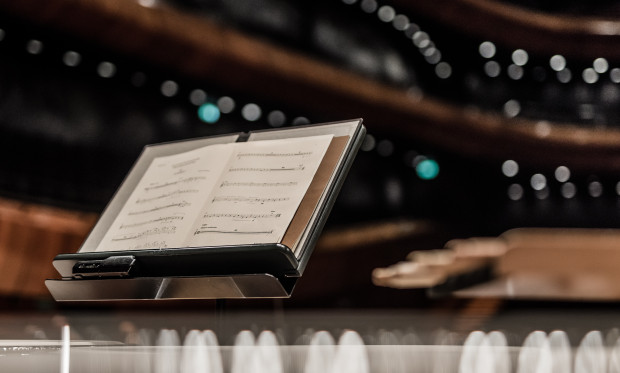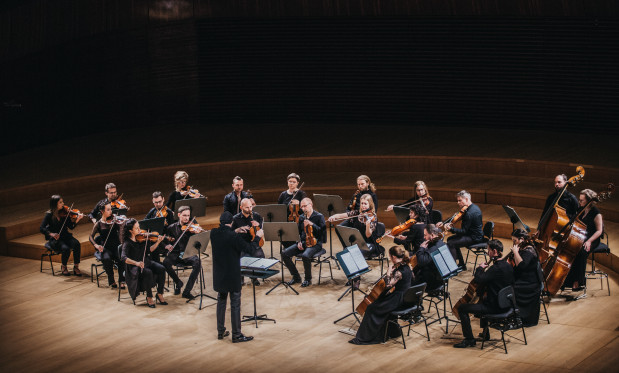NOSPR / Alsop / Feng / Between the Old and New Worlds - NOSPR
NOSPR / Alsop / Feng / Between the Old and New Worlds
The period when these four works were composed, i.e. the years between 1932 and 1945, was a time of fundamental change in American music culture, shaped by the turmoil of the Great Depression and World War II.
This was a pivotal moment in American music history, when four composers – each from a different generation and diverse national and cultural background – stepped forward to ask what American music could sound like, decades after Dvořák’s Symphony ‘From the New World’ had raised the same question. They were all either immigrants or descendants of immigrants, steeped in European traditions and the national styles that still resonated within them. Yet, each sought to synthesise that European heritage with native cultural elements and distinctively American ‘innovations’ – primarily through drawing upon the musical and film contexts as sources of inspiration.
To Gershwin, jazz constituted the equivalent of American folk music, which – like the folklore of European nations on the Old Continent – was to become a source of inspiration for his symphonic works and give them a ‘national’ character. His Cuban Overture was written in 1932 following a holiday in Havana, during which Gershwin pursued his vision of American music as a synthesis of jazz elements with symphonic forms and the vibrant colours of local instrumentation.
Appalachian Spring was composed between 1943 and 1944 at the request of Elizabeth Sprague Coolidge, intended as a ballet score for Martha Graham. In it, Copland directly references American musical tradition by including the Shaker song entitled Simple Gifts. On the one hand, the music captures the wartime atmosphere, but on the other, it also radiates an affirmation of the American spirit of youth, optimism and hope. The orchestral suite from the ballet earned him the Pulitzer Prize for Music in 1945.
Leonard Bernstein continued this way of thinking (and tradition) in his three dance episodes from On the Town, also composed in 1945. As a result, his theatrical score combines classical, Broadway and jazz elements. The three dances burst with post-war joy and optimism, embodied by three sailors who spend a whirlwind twenty-four hours in New York City.
Korngold’s Violin Concerto may be regarded as a distinctive ‘abreaction’ to wartime trauma. The composer, having fled to California as a Jewish exile following the Anschluss in Austria, had vowed to compose only film music until Hitler was defeated. The concerto, completed in 1945, became his manifesto of a return to normality. Though the work is firmly rooted in the European tradition, it also stands as a notable example of stylistic convergence and syncretism: Korngold integrated thematic material from his own film scores in each of the three movements (Another Dawn, Juarez, Anthony Adverse, The Prince and the Pauper).
Andrzej Sułek
Concert duration (intermission included): approximately 90 minutes
Everything you need to know before you come to the NOSPR – practical advice for those attending events
We kindly request that you familiarise yourself with the information concerning parking in the Culture Zone – important information about parking.
Upcoming events

NOSPR / Humala / New Year's Eve concert / An Oscar Night on New Year’s Eve at NOSPR
Concert Hall
Sold out
JazzKLUB / Laureates of the Jazz Juniors 2025 Competition - Symbiosis 5 / Jazz of the Future
Chamber Hall
Buy ticket











